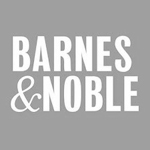From Introduction:
To many writers science looks at the material nature. Biological studies prove that thought arises out of matter and is a product of physical laws, chemistry and electronics. I believe science shows us more than that. Science, properly considered, does not diminish man. It does not take away his soul. On the contrary, only with an understanding of science can we grasp what is truly noble, feel our soul, the metaphysical.
This book is organized into five sections. Each will build upon arguments raised in previous sections. Neurological descriptions will capitalize on nervous system's organization into three limbs: afferent, efferent, and associative. Thus is the structure of the book like that of the nervous system.
1. “Inside the Neuron- Consciousness, Unconsciousness, Split Consciousness“ Begins with a consideration of brain death as ultimate lesion experiment. The concept of lesion is taken to the point of remotest absurdity. From there this unit will look at basic neurology as we know it, alternating between micro or cellular functions and macro considerations, reviewing understandings about brain modules and how these tie together to yield the basic output of the brain which is consciousness and states of consciousness.
2. "Vision": The major premise is that we are able to see much more than basic design would predict. Vision is a model of sensory or afferent function. The major argument is that scientific analysis cannot fully explain how we experience a visual image. We see a great deal more than we ought to be able to given our meager biological endowment. The chapter begins with the design and development of the visual system, then describes how impulses ramify through the brain, mingle with visual and multimodal sensory data, emotion, and memory to form a percept or transforming experience. The physiology of vision has vast implications for reality and esthetics.
3. "Beginnings": Memory is the simplest cognitive or associative function but we will see that it is far from simple or trivial. How does memory function fit into the puzzle of experience? The chapter starts with the physiology of memory. It emphasizes the important fact that persons develop embryologically. We are not made whole as a Ford car or other object. This development must somehow reside in memory and have ultimately an effect on who we have become as does post-natal experience. Libraries and computers are “brain tools” that have expanded the capacities of the mind just in terms of storage. What we are is no longer confined to the space of one physical body or a single brain. A huge store of information is accessed an engram at a time, like a ribosome reads RNA one nucleotide triplet at a time. This is a model for focussing attention. We have a collective consciousness that can be accessed at any time be each of us. Persons living together are as human microprocessors working in parallel. The idea is that collective memory is now far more than is present in our head. It is a great store recorded in print magnetic, optical, and other media.
4. “Iconoclasm”: Section on executive or efferent function - organization of effort and labor to accomplish long term goals. Asks and answers questions such as: Why do persons act in a way contrary to their own selfish short-term goals? Here I explore the physiology of motor planning, and delayed gratification as well as how we make use of instruments outside the brain that enhance executive function. There is much more here than can be predicted given knowledge of the brain.
5. "Beyond Biology": Our abilities have expanded outside biological boundaries. Indeed, we have acquired so much cognitive ability that it can no longer be housed within the confines of head or brain. We are already well into changing and improving our genetic endowment, implanting of electronic and other devices inside our bodies and brain. What does "The "Marriage of Carbon and Silicon” imply about our view of ourselves? I explore how implantable Silicon computer devices and alterations of function and form that will inevitably come from genetic engineering will redefine the person. Indeed, human form and function is no longer fixed but a moving target. As technology allows us to step well beyond our biological endowments this will prove once and for all that there is far more to a person than can be encompassed by any pure biological or materialistic description. The general structure of the argument is to go from lesion and hypofunction, to intact function to look to the future of expanded function, a dilated human consciousness.
Science illuminates and helps define reality. Science is a tantalizing seductress, coldly incapable of satisfying our deepest desires. The scientific method leads us on by answering some consequential questions, but somehow, it seems, we will never get to what matters to us most. We may dream of one day crossing a great chasm and entering into a different world. We will have to conclude that material and mechanical models are insufficient. On that day we’ll view an ultimate truth that lies beyond material considerations, beyond biology.





